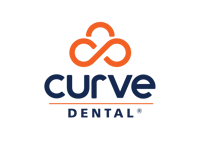Denture Consent Form: Why It Matters and How to Simplify the Process for Your Practice

Managing a dental practice requires much more than clinical expertise. Between patient communication, documentation, compliance, and workflow efficiency, dental teams juggle countless responsibilities that directly impact both patient trust and the practice’s success.
One area where many practices struggle is documentation—specifically, consent forms. Among the most important is the denture consent form. This document not only protects the practice legally but also ensures patients fully understand their treatment, responsibilities, and outcomes.
In this blog, we’ll explore why the denture consent form is so critical, what it should include, and how practices can streamline the entire process with modern tools. Along the way, we’ll highlight strategies for building trust, reducing administrative stress, and creating a more seamless experience for patients and staff alike.
What Is a Denture Consent Form?
A denture consent form is a legal and educational document that patients sign before beginning treatment involving dentures. Its purpose is twofold:
-
Patient Understanding – It ensures patients have received and understood information about the procedure, potential risks, alternatives, and expectations.
-
Practice Protection – It provides documentation that the practice communicated clearly and that the patient acknowledged the information.
At its core, this form is about clarity and trust. It formalizes what was discussed verbally, reducing miscommunication and protecting both patient and provider if issues arise later.
Why the Denture Consent Form Is Essential
1. Building Patient Trust
Patients often feel anxious about dental treatments, especially when it involves prosthetics like dentures. A clear, easy-to-understand consent form demonstrates transparency. When patients see everything laid out in writing, they feel reassured that your team values honesty and clarity.
2. Legal and Ethical Protection
Consent forms are a cornerstone of risk management. If a patient later claims they weren’t informed of certain risks or expectations, the signed form provides legal documentation that your team communicated appropriately.
3. Standardizing Communication Across Your Team
Every dentist has their own communication style, which can sometimes lead to inconsistencies. A standardized denture consent form ensures that no critical information is overlooked, regardless of who presents the treatment.
4. Enhancing Operational Efficiency
Without standardized documentation, administrative teams often scramble to locate forms, scan paper copies, or track missing signatures. Digital, integrated consent forms remove these barriers, freeing up time for patient-focused care.
What Should a Denture Consent Form Include?
While exact language may vary based on region and regulations, most denture consent forms cover these essential areas:
-
Patient Information – Name, date, and identifying details.
-
Procedure Explanation – A plain-language description of the denture process.
-
Potential Risks and Complications – Soreness, adjustments, breakage, or adaptation challenges.
-
Treatment Alternatives – Other restorative options, if available.
-
Patient Responsibilities – Care, maintenance, follow-ups.
-
Financial Agreement – Clarification of cost, insurance coverage, and out-of-pocket responsibility.
-
Acknowledgment and Signature – A space for the patient to sign, confirming they understand and accept the information provided.
Well-designed consent forms don’t overwhelm with jargon. Instead, they strike a balance between clarity and completeness.
The Patient Experience: More Than Just a Form
While consent forms may seem like routine paperwork, they are a key moment in the patient journey. How you present the denture consent form can impact the patient’s perception of your practice.
Presenting the Form with Care
Patients should never feel like they’re signing a contract without understanding it. Train your team to:
-
Walk patients through the form line by line.
-
Use plain language, avoiding unnecessary technical terms.
-
Invite questions and pause for discussion.
Using the Form to Strengthen Communication
Instead of treating the consent form as a box to check, view it as an opportunity to build rapport. When patients feel heard and informed, their confidence in your practice grows.
Reducing Patient Anxiety
Dentures can represent a major life change. Taking time to explain the form shows empathy and helps patients feel supported during what may be an emotional transition.
From Paperwork to Practice Management: The Administrative Burden
For many practices, consent forms create unnecessary administrative headaches.
-
Paper forms get lost, misfiled, or damaged.
-
Staff spend hours scanning, uploading, and attaching forms to patient charts.
-
Tracking which patients have signed forms is time-consuming.
-
Compliance risks increase if documentation isn’t complete or accessible.
In a busy dental office, these inefficiencies compound quickly, pulling staff away from what matters most—patient care.
The Digital Transformation of Consent Forms
This is where modern practice management software changes everything. By digitizing the denture consent form, practices eliminate many of the frustrations tied to traditional paperwork.
Benefits of Digital Consent Forms
-
Centralized Storage – No more paper stacks or misplaced forms. Everything lives securely in the patient’s chart.
-
Real-Time Access – Providers can pull up signed forms instantly during appointments or audits.
-
Patient Convenience – Patients can review and sign on a tablet in-office or even electronically before their visit.
-
Automated Compliance – Built-in alerts ensure no treatment moves forward without the necessary signatures.
-
Streamlined Workflows – Integrated digital forms reduce administrative workload and keep records organized.
How Curve Dental Simplifies Consent Form Management
At Curve Dental®, we recognize that documentation is not just a back-office task—it’s central to both patient trust and practice efficiency. That’s why our all-in-one, cloud-based platform includes tools for seamless consent form management.
With Curve, practices can:
-
Create customized denture consent forms directly in the system.
-
Have patients sign digitally, whether on a tablet or remotely.
-
Store signed forms automatically within the patient’s chart.
-
Access documents anytime, from any device, with secure cloud storage.
This not only reduces paperwork but also supports a patient-first experience, where administrative steps are smooth and unobtrusive.
Best Practices for Managing Denture Consent Forms
To maximize the benefits of digital and traditional workflows alike, consider these strategies:
1. Keep It Patient-Friendly
Use straightforward language and ensure the layout is easy to follow. Consider translating forms into the most common languages in your community.
2. Train Your Team Thoroughly
Even the best forms fall short if staff don’t know how to present them. Role-play scenarios to build comfort and consistency.
3. Review Forms Regularly
Regulations, best practices, and technology evolve. Schedule annual reviews to ensure your denture consent forms remain accurate and relevant.
4. Leverage Automation
Use software alerts and workflow tools to ensure no treatment begins without a completed consent form.
5. Align with Overall Patient Experience Goals
Remember: the consent process is part of the larger journey. Integrating it smoothly into scheduling, intake, and billing keeps the patient experience cohesive.
The Broader Role of Consent in Dental Practice Management
While this blog focuses on the denture consent form, the lessons apply to all dental consent documentation. Whether for implants, orthodontics, or extractions, consent forms play a pivotal role in:
-
Patient education
-
Risk management
-
Legal compliance
-
Operational efficiency
Standardizing and digitizing all consent forms can transform your workflows, reduce administrative strain, and enhance patient trust.
Common Pitfalls to Avoid
Even with the best intentions, practices sometimes stumble in managing consent forms. Here are some mistakes to watch out for:
-
Relying solely on paper forms – increases the risk of loss and inefficiency.
-
Using overly technical language – patients may sign without understanding, undermining trust.
-
Skipping team training – leads to inconsistent communication and errors.
-
Failing to update forms – outdated language can create compliance gaps.
By proactively addressing these pitfalls, your practice sets itself up for smoother, safer workflows.
Scaling Your Dental Practice with Smarter Documentation
As your practice grows, your documentation needs multiply. More patients, more treatments, and more providers all mean more forms to manage. A digital-first approach ensures your practice stays organized and efficient—while also preparing you for expansion, additional locations, or new service lines.
For startups, this foundation is especially critical. Building strong documentation practices early on prevents headaches later and allows your team to focus on delivering great patient care.
Conclusion: The Denture Consent Form as a Foundation for Trust and Efficiency
A denture consent form is more than just a signature on paper. It’s an opportunity to:
-
Build patient trust through transparency.
-
Protect your practice legally and ethically.
-
Standardize communication across your team.
-
Streamline workflows with digital solutions.
When managed thoughtfully, consent forms become a cornerstone of both patient experience and practice efficiency. By adopting tools like Curve Dental’s cloud-based platform, practices can simplify documentation, reduce administrative burden, and focus on what matters most—caring for patients.
*This content was partially generated by artificial intelligence. It may contain errors or inaccuracies, and should not be relied upon as a substitute for professional advice.

Curve Dental
Welcome to the official blog of Curve Dental. Serving up content about the team behind Curve Dental
